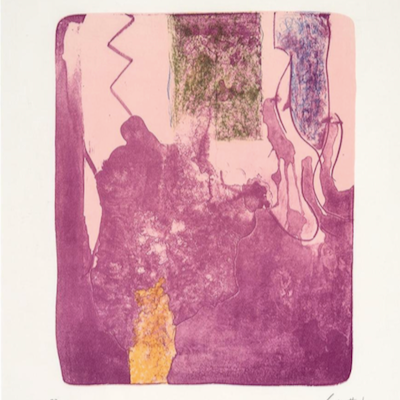
Details
Artist
Styles
image size: 24,5 x 27,5 cm // Faïence by Helena Vieira da Silva, a limited edition lithograph created in 1971, captures the artist's characteristic abstract style, combining layered colors and intricate linework. This piece, part of an edition of 150 with additional artist proofs, presents a complex composition of geometric patterns in shades of blue, green, and muted earthy tones, evoking a sense of architectural structure or a densely woven tapestry. Vieira da Silva’s work often explores spatial ambiguity and depth, encouraging viewers to navigate the interlocking forms and interpret the hidden rhythm within. With an image size of 24.5 x 27.5 cm and overall dimensions of 36.7 x 33.4 cm, Faïence invites a contemplative experience, blending abstraction with subtle hints of structure and order.
Faïence, 1971
form
Medium
Size
36.7 x 33.4 cm
- Inches
- Centimeters
Edition
Price
Details
Artist
Styles
image size: 24,5 x 27,5 cm // Faïence by Helena Vieira da Silva, a limited edition lithograph created in 1971, captures the artist's characteristic abstract style, combining layered colors and intricate linework. This piece, part of an edition of 150 with additional artist proofs, presents a complex composition of geometric patterns in shades of blue, green, and muted earthy tones, evoking a sense of architectural structure or a densely woven tapestry. Vieira da Silva’s work often explores spatial ambiguity and depth, encouraging viewers to navigate the interlocking forms and interpret the hidden rhythm within. With an image size of 24.5 x 27.5 cm and overall dimensions of 36.7 x 33.4 cm, Faïence invites a contemplative experience, blending abstraction with subtle hints of structure and order.
- Recently Added
- Price (low-high )
- Price (high-low )
- Year (low-high )
- Year (high-low )
What is lyrical abstraction ?
Lyrical abstraction is a descriptive term characterizing a type of abstract painting closely related to Abstract Expressionism, in use from the 1940s to the present. The term can also describe two distinct but related trends in post-World War II modernist painting. This art movement originated in Paris, France, after the war, emphasizing personal expression, spontaneity, and the emotional use of color and form.
















